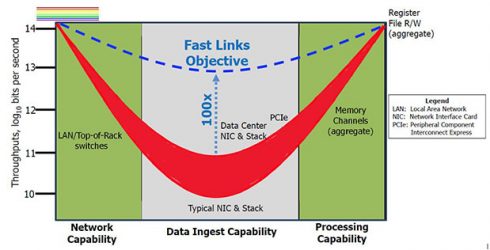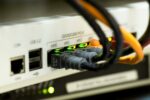
In an effort to advance the network stack, the Defense Advanced Research Projects Agency (DARPA) announced plans to devise new networking approaches. According to the agency, while computing performance and networking performance have been accelerating, the network stack, particularly the network interface card (NIC), is falling behind.
NIC is the hardware that “bridges the network/server boundary,” the agency explained. Because of its slow performance, it is impeding on data ingest and causing a bottleneck within the network stack. In addition, the NIC has poor application design, and limitations in server memory technologies and competition for shared resources.
“The true bottleneck for processor throughput is the network interface used to connect a machine to an external network, such as an Ethernet, therefore severely limiting a processor’s data ingest capability,” said Jonathan Smith, a program manager in DARPA’s Information Innovation Office “Today, network throughput on state-of-the-art technology is about 1014 bits per second (bps) and data is processed in aggregate at about 1014 bps. Current stacks deliver only about 1010 to 1011 bps application throughputs.”
To address the challenges, DARPA is introducing the Fast Network Interface Cards (FastNICs) program with plans to improve the network stack by a factor of 100.
“There is a lot of expense and complexity involved in building a network stack – from maximizing connections across hardware and software to reworking the application interfaces. Strong commercial incentives focused on cautious incremental technology advances across multiple, independent market silos have dissuaded anyone from addressing the stack as a whole,” said Smith.
The program will select applications with network challenges and provide the hardware support, operating system software and application interfaces necessary. The team of researchers will also look to develop, implement, and integrate clean-slate network subsystems, the agency explained.
Other focus areas will be on developing hardware systems to improve aggregate raw server datapath speed; developing system software to manage the FastNICs hardware resources; and explore apps that could benefit from the program-generated hardware.
More information is available here.








